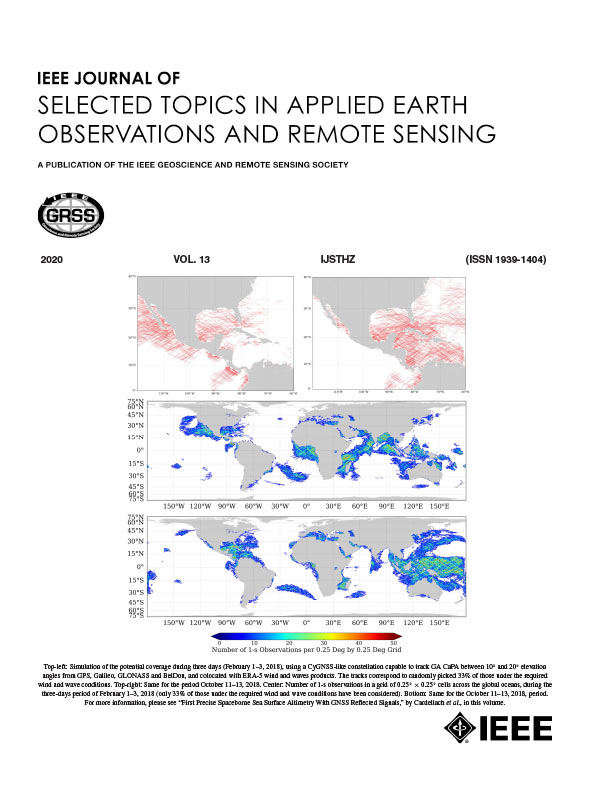解读二维和三维城市景观指标在城市梯度昼夜地表热环境中的作用
IF 4.7
2区 地球科学
Q1 ENGINEERING, ELECTRICAL & ELECTRONIC
IEEE Journal of Selected Topics in Applied Earth Observations and Remote Sensing
Pub Date : 2024-09-06
DOI:10.1109/JSTARS.2024.3455322
引用次数: 0
摘要
城市热岛现象对城市气候和人类福祉造成了不利影响。城市形态等各种影响因素已被用于揭示其对地表温度(LST)的影响。然而,人们对二维(2-D)和三维城市形态如何影响城市梯度的昼夜 LST 还缺乏了解。本文以中国南京为研究区域。利用多源遥感数据,我们研究了二维/三维城市形态对城市梯度昼夜低温层的相对贡献和边际效应。研究结果如下1) 二维城市形态对日间低温层的总体影响超过了三维城市形态。相反,三维城市形态对夜间低温层的影响更大。2) 在大多数城市梯度中,建筑物比例(PER_B)、树木比例(PER_T)和天空视角系数(SVF)是白天的主要影响因素。在夜间,SVF 和 PER_B 在所有地区都位居前四位。3) PER_T 与白天的 LST 呈负相关,当 PER_T 超过 30% 时,会产生更强的降温效应。PER_B 与白天的 LST 呈正相关,而夜间则相反。SVF 大于 0.9 会降低梯度 4 至 8 中的白天 LST,而 SVF 大于 0.8 则会降低所有梯度的夜间 LST。我们的研究结果为决策者提供了重要的启示,有助于他们制定有效的策略来缓解昼夜城市热环境。本文章由计算机程序翻译,如有差异,请以英文原文为准。
Deciphering the Roles of 2-D and 3-D Urban Landscape Metrics in Diurnal Surface Thermal Environment Along Urban Gradients
The urban heat island phenomenon has posed detrimental effects on urban climate and human well-being. Various influencing factors, such as urban morphology, have been applied to reveal their influences on land surface temperature (LST). However, there exists a lack of comprehension regarding how two-dimensional (2-D) and 3-D urban morphologies influence diurnal LSTs across urban gradients. In this article, Nanjing, China was taken as the study area. Using multisource remote sensing data, we investigated the relative contributions and marginal effects of 2-D/3-D urban morphology on diurnal LSTs along urban gradients. The following results have been shown. 1) The overall impact of 2-D urban morphology on daytime LST surpassed that of 3-D urban morphology. Conversely, 3-D urban morphology exhibited a greater impact on nighttime LST. 2) During the day, the percent of building (PER_B), the percent of tree (PER_T), and the sky view factor (SVF) were the main contributors in most urban gradients. At night, SVF and PER_B ranked among the top four factors for all areas. 3) PER_T was negatively related to daytime LST, and when PER_T exceed 30%, it contributed to a stronger cooling effect. PER_B was positively correlated with daytime LST, while the correlation was reversed at night. An SVF greater than 0.9 decreased daytime LST within gradients 4 to 8, while an SVF exceeding 0.8 lowered nighttime LST across all gradients. Our findings provide crucial insights for decision-makers to develop effective strategies in mitigating the diurnal urban thermal environments.
求助全文
通过发布文献求助,成功后即可免费获取论文全文。
去求助
来源期刊
CiteScore
9.30
自引率
10.90%
发文量
563
审稿时长
4.7 months
期刊介绍:
The IEEE Journal of Selected Topics in Applied Earth Observations and Remote Sensing addresses the growing field of applications in Earth observations and remote sensing, and also provides a venue for the rapidly expanding special issues that are being sponsored by the IEEE Geosciences and Remote Sensing Society. The journal draws upon the experience of the highly successful “IEEE Transactions on Geoscience and Remote Sensing” and provide a complementary medium for the wide range of topics in applied earth observations. The ‘Applications’ areas encompasses the societal benefit areas of the Global Earth Observations Systems of Systems (GEOSS) program. Through deliberations over two years, ministers from 50 countries agreed to identify nine areas where Earth observation could positively impact the quality of life and health of their respective countries. Some of these are areas not traditionally addressed in the IEEE context. These include biodiversity, health and climate. Yet it is the skill sets of IEEE members, in areas such as observations, communications, computers, signal processing, standards and ocean engineering, that form the technical underpinnings of GEOSS. Thus, the Journal attracts a broad range of interests that serves both present members in new ways and expands the IEEE visibility into new areas.

 求助内容:
求助内容: 应助结果提醒方式:
应助结果提醒方式:


